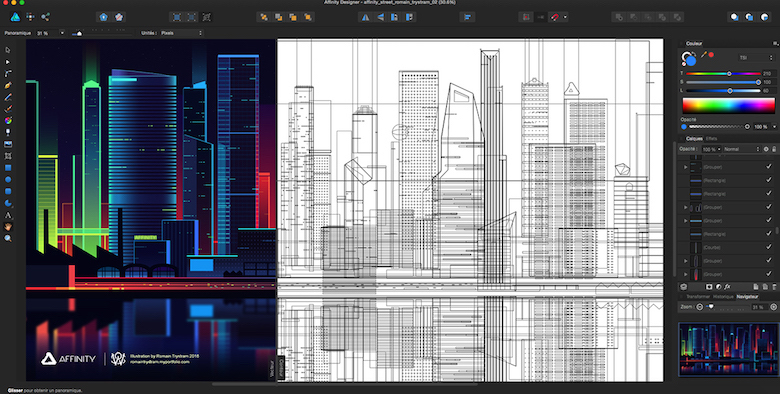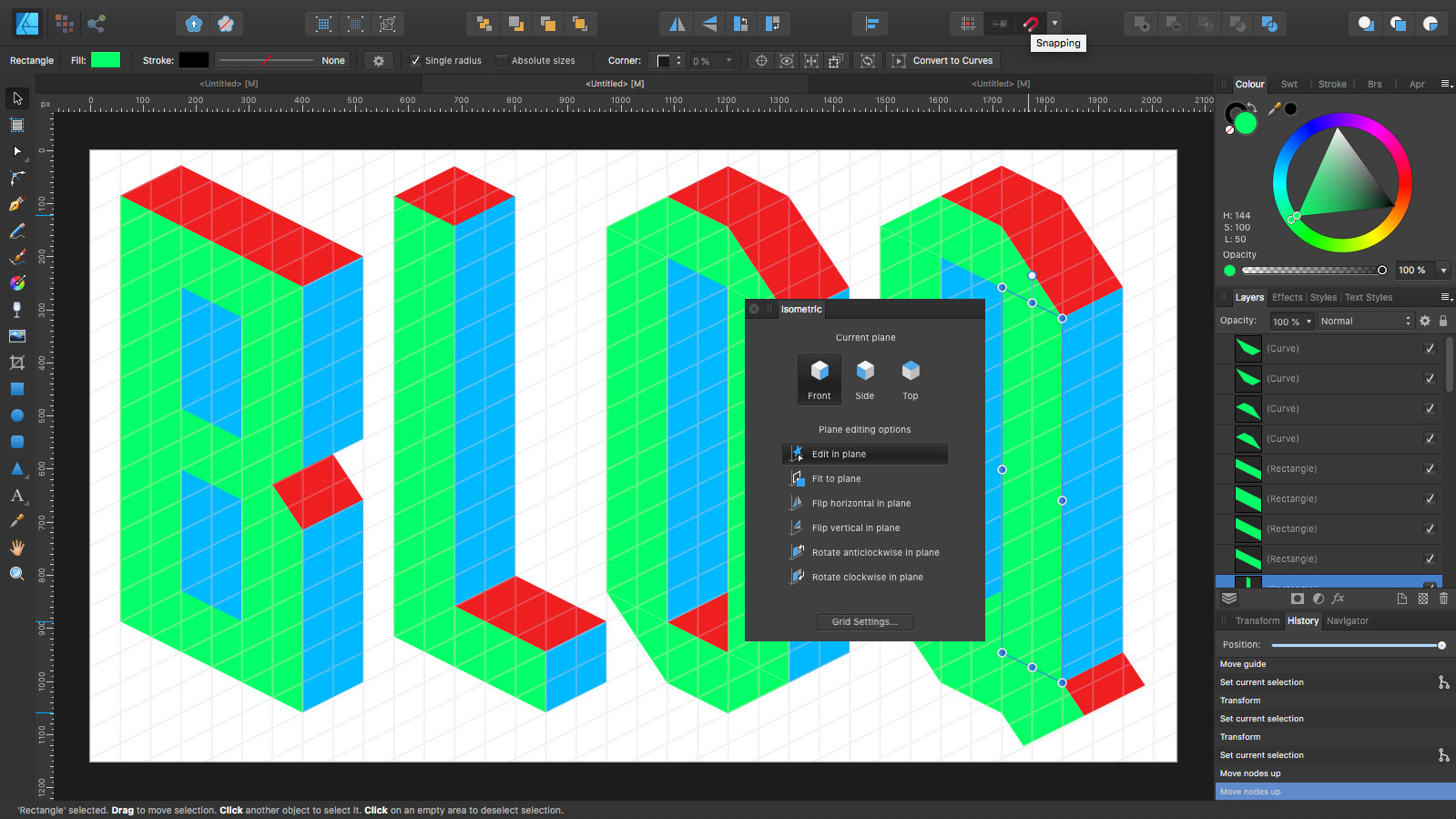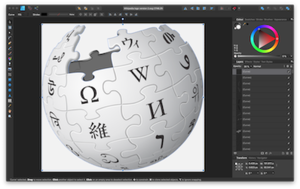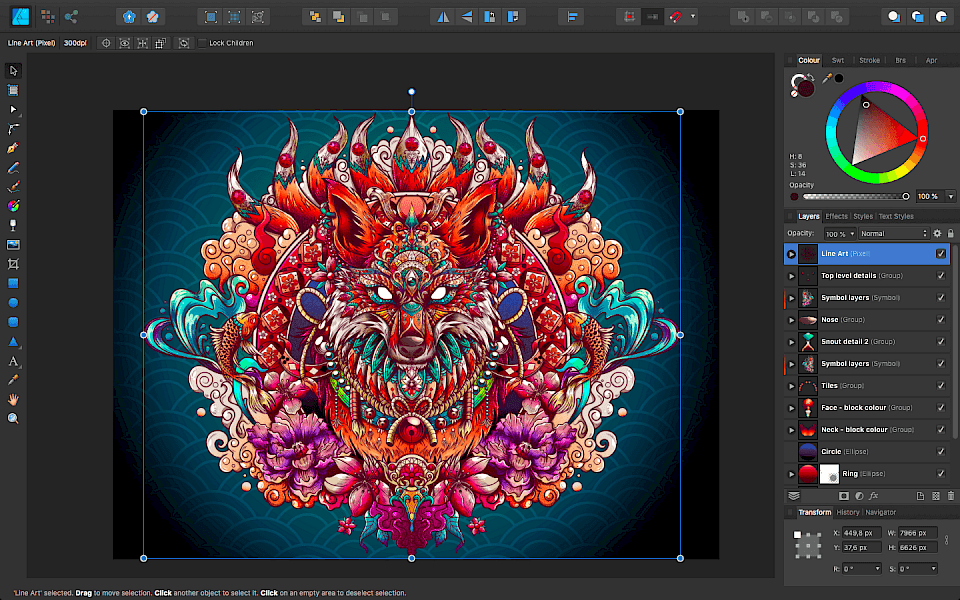Affinity Publisher Design beautiful layouts, create master pages and use a baseline grid. With comprehensive support for open type fonts, you can create text styles, precisely track and kern text, create drop caps, text-on-a-path and much more. With Affinity Publisher, you get all the tools you need for professional desktop publishing. We are a culture of creatives from all walks of life united by our commitment to the meaningfully aesthetic. Because this belief permeates our lives, it also defines our work.
If you’re an absolute beginner to all things Affinity and even graphic design, you may stumble across some terms and terminology that just stop you in your tracks.
In graphic design, an asset is an object(s) which has value to a designer because it has been previously designed and can be reused (so saving design time). Assets are valuable in branding projects as they could carry an approved consistent brand message (e.g., as a logo), important to a client. Download premium Affinity Designer graphics, fonts and templates with Envato Elements: https://elements.envato.com/all-items/affinity+designer?utmcampaign. We are a custom screen printing and embroidery company serving Batesville, Indiana and beyond. We have online design and quoting. We look forward to doing business with you.
With a focus on Affinity Designer in this article, we’ll give a little more understanding to these terms so your learning experience is maximised. This should help when interpreting videos and help topics for the first time.
Handles
The term handle generally implies something you can grab onto. In graphic design, this is still very much true. Handles mean the small circles at the corners of a selected object from which you can drag to resize (or rotate) that object. They’re also placed midway along an object’s edge to allow further resizing or shearing. In both instances think of them as being transformation points.
Transforming
Umm.. sounds like something from an 80’s science-fiction action series. However, if we swapped this title for an alternative title of Positioning, sizing, rotating and shearing objects we’d be 100% correct. It’s simply a catch-all term for manipulating a selected object in different ways.
Z-order
Objects such as curves, shapes, images and text are ‘stacked’ on the page, from back to front, as if your page had depth. The higher an object’s order the further to the front that object will be. This is known as the z-order. If objects overlap, the frontmost object will partially or fully obscure the object beneath it.
Pen drawing
If you didn’t know it already, the Pen Tool is one of the most commonly used graphic-design tools—the building block to many a design. It’s a relatively complex tool so it has its own set of terms worth explaining.
Nodes
Those small squares or circles you create with every click (or drag) of the Pen Tool are nodes. Where you place them will dictate the length and shape of your curve. Squares indicate sharp nodes, while circles mean either a Bezier (smooth) or best-fitting Smart node.
Incidentally, the Pen Tool’s sister tool, the Node Tool, is named as such as it edits those nodes previously laid down by the Pen Tool.
You may hear fellow designers talk about working “on-curve”—this simply means manipulating nodes as, by their nature, they are always located directly on the curve itself.
Segments
Not grapefruit segments—instead, the portion of the curve that sits within two adjacent nodes. Multiple segments make up the entire curve.
Control handles

We’ve covered handles already, but for the Pen Tool, handles have a different behaviour, so they’re qualified, terminology wise, as being control handles. Always extending from a node as a pair of opposing handles, they can be dragged in different directions and to different lengths to reshape the curve as it transits node to node.
Control handle manipulations are considered “off curve” as they never ‘sit’ on the curve itself.
Symbols
Not to be confused with symbols used as special characters, this feature in Affinity Designer creates symbolic links between copied instances of the same object (e.g., the OVO logo below). By editing any one instance, all the instances will update with the new change automatically. Which is great for repeating elements across multiple artboards.
Take a look at the article How to use symbols in Affinity Designer for more details.
Bleed
The term bleed has its origins in the lithographic print industry. For graphic design with press-ready print support, you’d expect to see the term appear during Document Setup or at export time. Simply put, it extends the page dimensions so your graphics can be placed outside the page edge—when your printer trims the printed sheet no white edging will appear (otherwise without bleed, imagery touching the page edge may leave white edging).
Assets
Affinity Designer Graphic Card
You may be familiar with business assets, i.e. an item of value to a company (based on cost, security, confidentiality, etc). In graphic design, an asset is an object(s) which has value to a designer because it has been previously designed and can be reused (so saving design time). Assets are valuable in branding projects as they could carry an approved consistent brand message (e.g., as a logo), important to a client.
Serif Affinity Designer x64 With Keygen

Affinity Designer x64 Crack is the fastest, smoothest, most precise vector graphic design software available. Whether you’re working on branding, concept art, print projects, icons, UI, UX, or web mock-ups, Affinity Designer will revolutionize how you work, on macOS and Windows.

Features
Design tools redefined
All the tools you need in a professional vector design app, from an incredible precise pen tool to a super smooth gradient tool. All carefully considered and meticulously developed, they just work-in precisely the way you want them to.
Built for your workflow
With core principles of performance, stability, and lack of bloat, Affinity Designer has been meticulously crafted for a professional workflow.
Cross-platform performance
With a professional pedigree forged on Mac, and matched step for step on Windows, common file format delivers stunning results on either platform.
Unsurpassed speed and accuracy
Pan at 60fps and zoom to an eye-popping 10,000,000%, you’ll see all adjustments, effects, transformations, and brushes in real-time.
Work in any color space
RGB, CMYK, LAB, Grayscale. End-to-end CMYK workflow with ICC color management, and 16-bit per channel editing.

Unsurpassed file compatibility
The best PSD import engine available and full support for SVG, EPS, PDF, PDF/X and FH files means injecting Affinity Designer into your workflow is painless.
Natural brushwork
Use Force Touch, stylus pressure, tilt, and other controls for natural-looking artwork. Edit vector brush strokes as cleanly and easily as regular curves, and add raster brushwork—on its own or with vector art—to add depth and high-quality organic textures. Rotate the canvas, blend colors, edit brush parameters, create your own brushes and nozzles, and import .abr brushes for complete control over your work.
Throw some shapes
Affinity Designer delivers a comprehensive set of shape primitives with easy controls for adjusting geometry with corner settings and smart snapping indicators. A full set of Boolean geometry operations, non-destructive compound shapes, and full node editing mean you can create beautiful complex geometry in no time.
Affinity Graphic Design Software
Just your type
Add artistic text for headlines, text frames of any shape, or text that follows any vector path. Apply sophisticated styling and ligatures, previewing all your available fonts and style sets in on-screen panels. All the controls you need are built-in, including leading, kerning, baseline shift, tab stops – and now in version 1.5 you can create text styles across your document.
New professional print controls
Affinity Designer features full professional print output. Pantone® support, end-to-end CMYK and ICC color management are just part of it. You can also open, edit and output PDF/X files, set overprint controls, use spot colors, and add bleed area, trim and crop marks.
Powerful export
In export mode, you get a complete workspace dedicated to image export. Select areas, layers or objects to export, controlling each item’s output settings independently. For efficient web and UI design, you can automatically create new files whenever your design changes, in whatever resolution, file format, and folder structure you wish.
Common Affinity file format
Affinity’s shared file format makes the mixed discipline design as smooth and simple as it should be. Open any native Affinity file in any Affinity app on any platform and just keep working – with shared history, unlimited undo, and seamless switching. And for export, Affinity Designer takes all major file types in their stride.
Affinity Photo Graphic Design

Incredibly powerful artboards
In Affinity Designer, you can create an unlimited number of different design variants, sizes and screens – laying them out in one document to see them all at once. When you come to export you get full control over what artboards to output and with what settings, dramatically simplifying your workflow for responsive and app design.
Also, Try –Serif Affinity Photo x64 With Keygen!
Download Links
Affinity Design Software
Prime Link | Link 2
